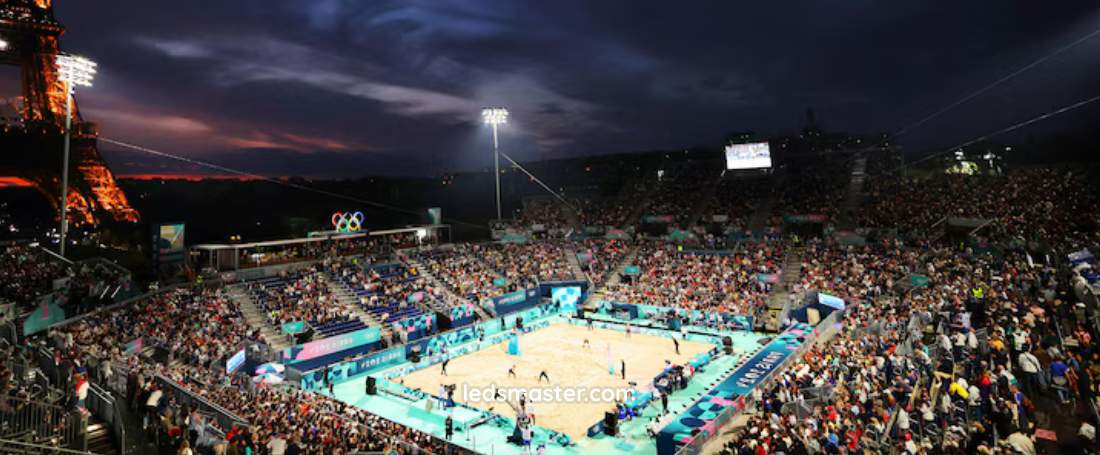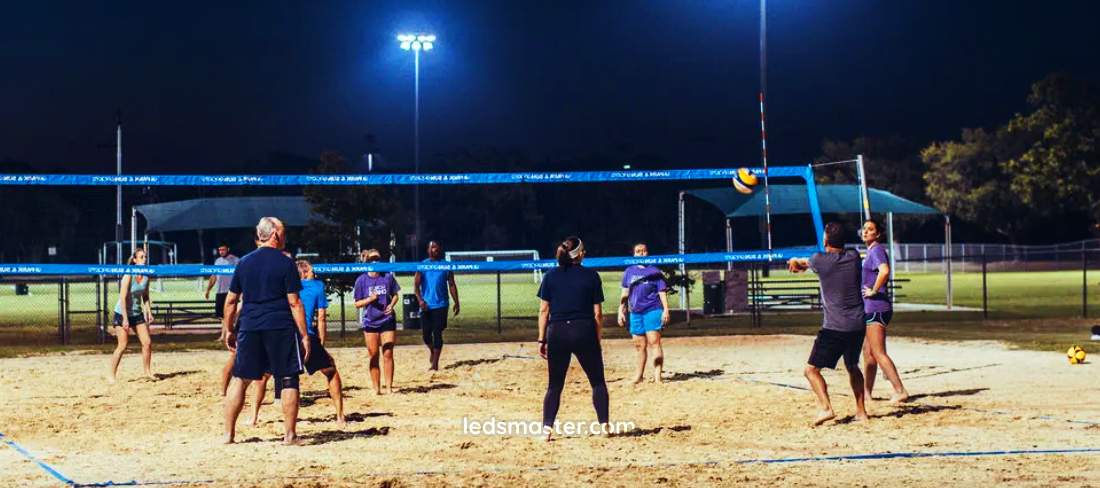Imagine stepping onto a volleyball court as the sun begins to set, the game still in full swing. Suddenly, the court lights up—not from traditional electricity, but from the power of the sun. Ready to discover how this innovative solution can brighten your game while saving energy? Let’s dive in!
Get your complimentary lighting design today
As outdoor sports continue to grow in popularity, lighting solutions for volleyball courts are becoming increasingly important. With an emphasis on energy efficiency and environmental sustainability, solar volleyball court lighting is emerging as a preferred option. Not only does it offer a cost-effective way to illuminate courts, but it also ensures that play can continue long after sunset. This article delves into the advantages, origins, battery capacity, and other relevant factors surrounding solar volleyball court lighting.
Table of Contents
ToggleOne of the primary advantages of solar volleyball court lighting is its energy efficiency. Solar lighting systems harness energy from the sun, storing it in batteries for use during the night. This reduces dependency on traditional electricity grids, leading to significant savings on energy bills. Unlike conventional lighting systems that rely on continuous power supply, solar lights utilize a renewable resource, making them a cost-effective option in the long run.
Solar lighting systems are environmentally friendly because they reduce carbon emissions and minimize the use of non-renewable energy sources. By switching to solar volleyball court lighting, facilities can reduce their carbon footprint. Additionally, solar lights have a much smaller environmental impact during production compared to traditional lighting systems, which use materials and processes that contribute to pollution.

Another notable advantage is the low maintenance requirement. Solar lighting systems are designed to be durable, often made with weather-resistant materials that can withstand harsh outdoor conditions. As they don’t rely on complex wiring or electrical infrastructure, the risk of malfunction due to power failures is minimal. This results in reduced maintenance costs, making solar lighting a practical option for long-term use.
Solar lights can be easily installed without the need for extensive wiring or trenching. This makes them an ideal solution for volleyball courts, especially in remote locations where access to power grids might be limited. The ease of installation also means that solar volleyball court lighting can be set up quickly, ensuring that players can enjoy a well-lit court without delays.
Solar lighting technology has its roots in the broader development of photovoltaic cells, which convert sunlight into electricity. The idea of using solar power for lighting purposes began gaining traction in the 1970s during the global energy crisis. As technology advanced, solar lighting became more efficient and cost-effective, paving the way for its application in various fields, including sports facilities.
Volleyball courts, which are often located in outdoor environments, were a natural fit for solar lighting. The need to provide consistent illumination for evening games and tournaments led to the exploration of solar solutions. Over time, solar volleyball court lighting has evolved, with modern systems offering high-quality LED lights, advanced battery storage, and smart control features.
Battery capacity is a crucial aspect of solar volleyball court lighting systems. Since solar lights rely on energy captured during the day, the stored power needs to last through the night. Battery storage ensures that the lights can function effectively even on cloudy days or during periods of low sunlight. Lithium-ion batteries are commonly used in modern solar lighting systems due to their long lifespan and ability to hold a charge efficiently.
Several factors can influence the battery capacity of a solar lighting system. The size of the photovoltaic cells, the amount of sunlight received, and the efficiency of the battery itself all play a role. It’s important to choose a solar lighting system with adequate battery capacity to ensure continuous illumination throughout the night, especially in areas where volleyball courts are used for extended hours.

The core component of any solar lighting system is the photovoltaic cell, which converts sunlight into electricity. Modern photovoltaic cells have become highly efficient, allowing solar panels to generate more energy from less sunlight. This is particularly important for volleyball courts, where lighting needs to be reliable, especially during evening matches.
The placement of solar panels also affects their efficiency. For volleyball court lighting, solar panels should be positioned in an area where they can receive maximum sunlight exposure throughout the day. This ensures that the batteries are fully charged by the time the lights are needed in the evening. Proper orientation and tilt of the panels can significantly enhance the system’s performance, especially in areas with variable weather conditions.
LED lights are commonly used in solar volleyball court lighting systems due to their energy efficiency and long lifespan. Compared to traditional incandescent or fluorescent lights, LEDs consume less power while providing a higher level of brightness. This makes them ideal for sports courts, where sufficient illumination is needed for player safety and visibility.
For volleyball courts, it is essential to achieve the right balance of brightness and coverage. Solar lighting systems equipped with LED lights can be adjusted to provide uniform illumination across the entire playing area. This ensures that there are no dark spots or areas of excessive glare, both of which can affect the quality of play. Many modern solar lighting systems also offer dimming options, allowing users to adjust the brightness according to specific needs.
Since volleyball courts are exposed to outdoor elements, solar lighting systems must be built to withstand various weather conditions. Solar lights are often constructed with materials that are resistant to rain, wind, and even extreme temperatures. This ensures that the lighting system remains functional throughout the year, regardless of weather changes.
Durability is key when it comes to outdoor lighting systems. High-quality materials, such as corrosion-resistant metals and shatterproof glass, contribute to the longevity of solar volleyball court lighting systems. Regular cleaning and occasional inspections are recommended to maintain optimal performance, but overall, the system requires minimal upkeep.
Many modern solar volleyball court lighting systems come with smart control features that allow users to automate the lighting process. Motion sensors, timers, and remote control options provide convenience and efficiency. For example, motion-activated lights can save energy by only illuminating the court when players are present, while timers ensure that the lights turn off automatically after games or practice sessions.
Remote monitoring systems enable users to check the status of the solar lighting system from a distance. This feature is particularly useful for facility managers who oversee multiple courts or large sports complexes. By using an app or online platform, they can monitor battery levels, energy consumption, and lighting performance without needing to physically inspect the lights.
Solar volleyball court lighting offers numerous advantages, from energy efficiency and environmental benefits to ease of installation and low maintenance. With advances in solar panel technology, battery capacity, and LED lighting, these systems provide reliable and cost-effective illumination for volleyball courts. As the demand for sustainable solutions grows, solar volleyball court lighting is poised to become an essential component of outdoor sports facilities worldwide.